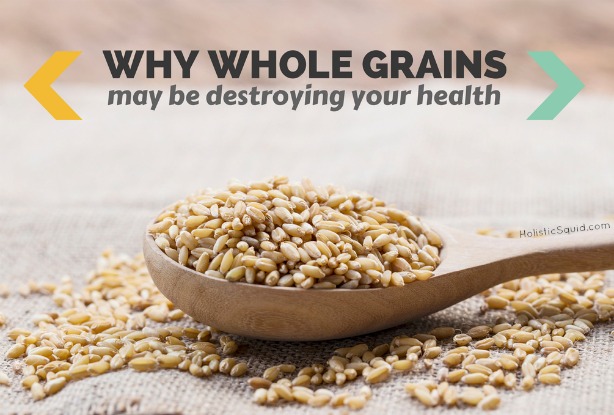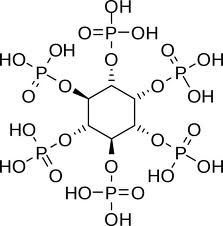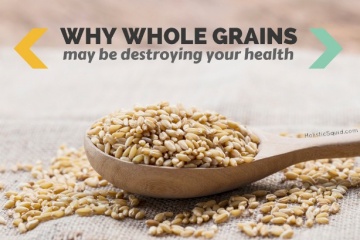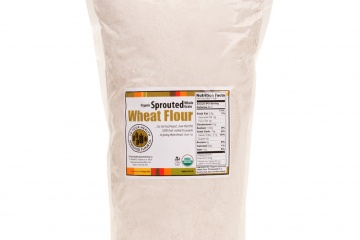
Many health-conscious folks eat whole grains and seeds as a healthy source of fiber and nutrients. So, you may be surprised to learn that grains contain a substance called phytic acid, which acts as an anti-nutrient, blocking the absorption of essential minerals. Mineral deficiency is associated with a whole host of conditions: anemia, bone problems, tooth decay, depression, anxiety, hormone imbalance and much, much more.
What is phytic acid?
Phytic acid (or phytate) is the principal storage form of phosphorus in plants, especially present in grains and seeds. This substance is not digestible to humans, so the phosphorus is essentially trapped in the compound, unavailable to your body. Furthermore, the molecular structure causes essential minerals (including calcium, zinc, niacin, copper, iron and magnesium) to bind to it, thereby preventing their absorption.
Phytate is actually an anti-oxidant (like vitamin C), and some research suggests that this compound can lower blood glucose, reduce the risk of heart disease, and reduce colon cancer by lowering absorption of iron and other minerals that the cancer cells need for growth. In the case of excess iron, phytic acid can be therapeutic in reversing the condition. Unfortunately, phytic acid's role as an anti-nutrient out-weights its benefits as it deprives the body's healthy cells of the minerals needed for health.
reduce colon cancer by lowering absorption of iron and other minerals that the cancer cells need for growth. In the case of excess iron, phytic acid can be therapeutic in reversing the condition. Unfortunately, phytic acid's role as an anti-nutrient out-weights its benefits as it deprives the body's healthy cells of the minerals needed for health.
Phytase is the enzyme that neutralizes phytic acid and liberates phosphorus. Unlike pure herbivore mammals (such as goats or rats), humans do not produce enough phytase to safely consume large quantities of high-phytate foods on a regular basis. However, probiotic lactobacilli, and other healthy digestive microflora can produce phytase. Therefore, humans who have good intestinal flora will have an easier time with foods containing phytic acid. Unfortunately, most modern diets are deficient in probiotic forming foods, so the average American often lacks healthy flora. Luckily, phytase also co-exists in plant foods that contain phytic acid and can be partially freed-up by preparing grains through the traditional methods discussed below.
Three ways to neutralize phytic acid
Nearly all of the modern preparations of grains that we consume today (whole or refined) contain phytic acid. Whether you're eating brown rice and quinoa or cookies and white pasta, most modern grains (as well as nuts and legumes) are not properly prepared.
Back in the olden days, traditional cultures throughout the world prepared grains with great care. Our ancestors were unknowingly neutralizing the phytic acid in the grains, thereby optimizing their nutritional value. To get the most out of grains, nuts, and beans, prepare prior to cooking or eating by using one of these three techniques: soaking, sprouting and souring.
#1 – Soaking
Soaking grains and beans before cooking releases phytase, allowing the phytic acid to be neutralized. Soaking can also make grains easier to digest, as it neutralizes enzyme inhibitors that prevent the grain (seed) from germinating under poor growing conditions. When soaked, grains are prepared for growth into a new plant. During this process beneficial enzymes are produced and vitamin content is boosted.
Soak grains for 12 to 24 hours in water with 1-2 Tbsp of whey, vinegar, lemon juice, yogurt, buttermilk or kefir. Rinse well to remove any acidic taste and cook as usual in fresh water.
Soaking grains is the easiest way to reduce their phytic acid – It just takes takes a bit of discipline. Every night after dinner or before bed, scoop your grains in a bowl and top with filtered water. In the morning, you will have oats, rice, or grain of your choosing ready to go.
#2 – Sprouting
Sprouted grain is highly nutritious. In addition to neutralizing phytic acid, sprouting activates food enzymes and increases vitamin content. Sprouted grain has more protein and less starches compared to non-sprouted grain, and has a lower glycemic index value.
To sprout grains, choose high quality, organic grains and rinse them thoroughly. Place in a ceramic pot or glass jar and add enough filtered warm water to cover all grains by several inches. Soak the grains overnight; then drain and rinse well. Rinse them several times the first day, and continue rinsing them until they have sprouted. Rinse and drain before using, refrigerating, or dehydrating to make sprouted flour.
While homemade is usually best because you know where your grains came from and how they were prepared, most well-stocked health food stores sell delicious sprouted breads, and crackers. Sprouted pastas, in my opinion are awful. Cultures for Health sells wonderful sprouted flour for baking. You can find out more about sprouted grain and the sprouting process at NourishedKitchen.com.
#3 – Souring
Souring neutralizes phytic acid, and grains fermented with this process also contain beneficial bacteria. Souring or lactic acid fermentation enhances the body's ability to take advantage of the nutrients in grains (as well as other foods).
Typically, grains are soaked and allowed to sour for between 12 hours and several days. Most “sourdough” bread is not prepared with traditional souring time, and therefore does not have the same health benefits. I've heard that 48 hours is ideal, but don't quote me on that one. Ask your baker or contact the company that makes your sourdough to find out how they prepare theirs.
You can research fermenting specific types of grains online, or purchase a book that focuses on fermented foods, such as Wild Fermentation by Sandor Katz. Read more about the benefits of lactic acid fermentation at NourishedKitchen.com.
You can have your grains and eat them too, but for the sake of health, make sure you prepare your grains or buy grains that have been properly prepared.
Tell me, do prep your grains to minimize phytic acid?











Really helpful post, Emily! While I’m Paleo due to autoimmune issues, I’m looking to round out my family’s meals with grains that won’t destroy its neighboring food. What do you think about store-bought sprouted brown rice? I’ve been on the fence about it since I didn’t know if white rice was overall a safer bet. And does store-bought sprouted grain need to be soaked at home as well?
Thanks!
Hi Lea – Thanks for your question. I don’t believe sprouted brown rice needs to be soaked, however I think white rice is safer if your looking to avoid phytic acid.
Hi Emily, I’m new to the soaking routine & wondered if I can soak & then dry items sufficiently (ie: oats & nuts) before using or will they spoil? Is it alright to freeze nuts after being soaked? Thanks so much!
Hi Tiffany,
No problem! After soaking nuts, you should dehydrate them on low in your oven or in a dehydrator until completely dry (usually takes about 12 hours in an oven). You wouldn’t need to freeze them afterward. No need to soak oats, though, unless you’re about to cook it. Hope this helps!
Hello, great post. Can you clear this up for me?? Conflicting info on soaking rolled oats. Some say there is not enough phytic acid to be concerned about to soak rolled oats. What do you think?
Hey Rebecca. You could soak your rolled oats if you plan on cooking it overnight for instance. I wouldn’t worry with it if you need the oats dry-ish for your recipe, though.
Some of my grains that I am soaking to sprout are floating on the top of the water. Are they still safe to use?
Hi Sue, it would be safer to discard anything that has floated to the top. It is possible that they have gone rancid.